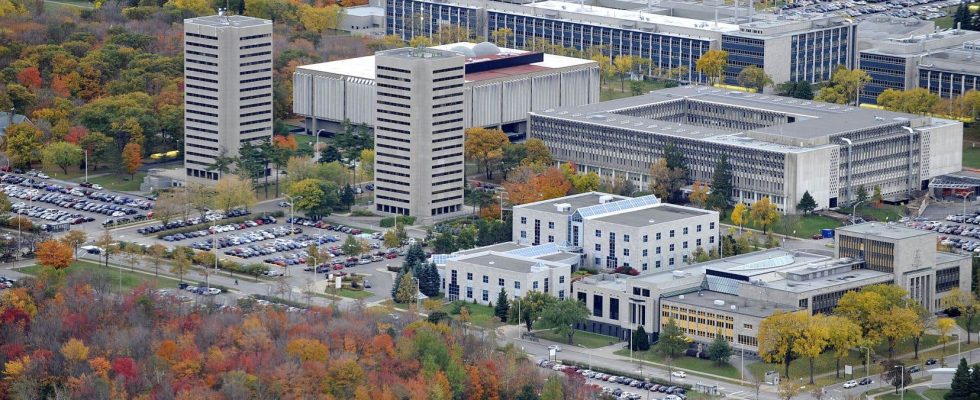This text is part of the special Higher Education notebook
At the Faculty of Educational Sciences at Laval University, the teaching staff are dreaming of the design of their future pavilion. A building which should open its doors in the fall of 2028 to train more graduates while offering them a modernized environment. Interview with the dean of the faculty, Anabelle Viau-Guay.
According to the announcement made last November, the government of Quebec is investing $19.2 million in the construction of a new teaching pavilion on the Laval University campus. The building of approximately 1200 m2 will welcome the cohorts of the Faculty of Education Sciences (FSE), to the tune of 175 additional students.
“We know that we have the financing, a date, an overview of the dimensions, but everything has to be built. We are currently thinking about how the development will be deployed, and it is a very exciting step for us,” confides the dean of the FSE, Anabelle Viau-Guay. All students at the faculty will also benefit from the new infrastructure, whether they are following a course in teaching, psychoeducation, guidance, sports intervention or school administration.
Need for belonging and modernity
The Faculty sees two major benefits in the outcome of this project, called Passerelle. The first: the FSE will finally benefit from its own pavilion. Because if its administrative offices are currently located in one of the two campus towers, the classroom spaces are elsewhere, distributed in different pavilions. “We have an existence, but no pied-à-terre. Having a faculty heart will allow students and teachers to really socialize, meet each other, organize scientific events and carry out team work,” argues Mme Viau-Gay.
But above all, this pavilion project offers the Faculty the opportunity to design a study environment in line with the most recent educational advances, both in terms of approaches and facilities. “We want to provide our students with learning spaces that reflect the school of tomorrow, that is to say at the cutting edge of research knowledge in educational sciences and educational technology,” emphasizes the dean, who cites as an example the use of digital tools, the absence of stands or even the establishment of workshops promoting collaborative and project-based learning. “These ideas emerge from the faculty, several of whom are very engaged in research. They are very interested in approaches that allow the development of both scientific content and transversal skills, such as creativity and problem solving. »
Bridging research, training and integration
Bringing this vision to life will require reviewing not only the layout of spaces, but also that of programs. A lick of paint that coincides with the faculty’s need to comply with the Professional Skills Framework for the teaching profession, updated in 2021. “The stars are well aligned. We are in a period of turmoil in terms of course content, pathways, new programs. With the Passerelle project which is coming, we are thinking about everything in an integrated way. »
The name “Passerelle” was also chosen to evoke the potential of the future building which will welcome students in initial training, but also professionals from the educational sector who will come to follow continuing training or take part in networking activities. “Passerelle is an imaginative name which refers to the bridge that we wish to build between research and teaching, between initial training, continuing training and professional integration. »
An antidote to the teacher shortage?
Facilitating the professional integration of future teachers is one of the main aims of this building project. For Anabelle Viau-Guay, this question is at the heart of solving the teacher shortage. Perhaps even beyond the desire to increase the number of graduates, because many of them leave their jobs early. “The better we prepare our students, the less likely they are to leave the profession. By training them in an environment that integrates the innovations taking place in the school environment, we facilitate a transition that is recognized by many as being difficult. » This bringing students closer to reality on the ground will also be done through pilot classes which will make it possible to simulate real learning situations with schoolchildren in the region.
The dean recently put forward this quality research to justify that Laval University will not develop short programs giving access to the teaching certificate. This position follows the adoption of Bill 23 on education reform on December 7, which notably gives the green light to the creation of 30-credit programs to obtain this sesame. The FSE currently delivers it at the end of a four-year baccalaureate or a two-year qualifying master’s degree.
“We believe that the parameters of our training are those which best meet the level of qualification required by the complexity of the profession. We consider that they should remain the main, even sole, route to access the profession,” says Anabelle Viau-Guay, who however adds that she shares the concern linked to the shortage of teachers and is delighted to see the government looking for solutions.
This content was produced by the Special Publications team at Duty, relating to marketing. The writing of the Duty did not take part.
